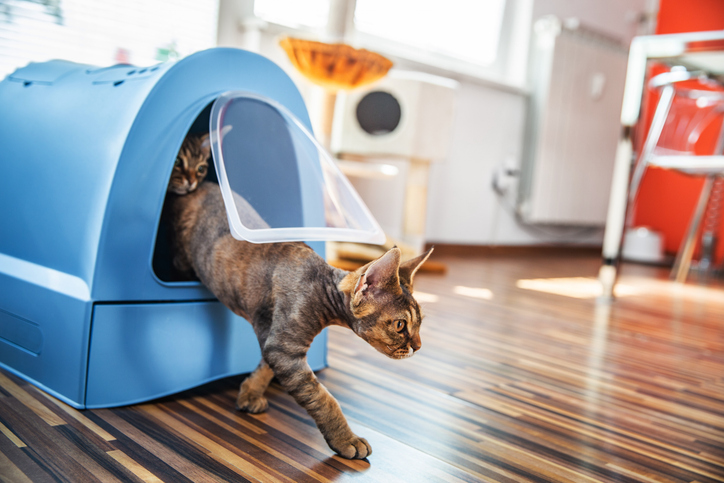
Managing the Litterbox in a Multi-Cat Home
Navigating the intricacies of a multi-cat litterbox requires a blend of understanding your cats’ preferences and employing smart solutions. Here are some valuable insights to help you maintain a hygienic and stress-free litterbox area:Multiple Boxes, Multiple Locations
-
- Ensure there’s more than one litterbox in the house, preferably one per cat, plus an extra. Cats often appreciate having options, and it helps prevent territorial disputes.
- Place the boxes in different areas to avoid congestion and provide each cat with its private space.
Litter Preferences
-
- Cats can be picky about the type of litter they prefer. Experiment with different textures and materials to find what your cats like best.
- Some cats prefer covered boxes for privacy, while others may feel trapped. Test both options to see what suits your cats.
Regular Cleaning Routine
-
- Scoop the litterboxes at least once a day to remove waste promptly. Cats are more likely to use a clean box, and it prevents odors from accumulating.
- Perform a deep clean regularly, changing the litter entirely and washing the box with mild, unscented soap.
Choosing the Right Location
-
- Place litterboxes in quiet, low-traffic areas where cats can have some privacy. Avoid areas with loud appliances or where they might feel cornered.
- Ensure that boxes are easily accessible, especially for older or less agile cats.
Monitoring for Changes
-
- Keep an eye on your cats’ behavior around the litterbox. Changes in bathroom habits can indicate health issues or stress.
- If a cat starts avoiding the litterbox or shows signs of discomfort, consult with your veterinarian.
Odor Control
-
- Invest in high-quality, odor-absorbing litter to keep your home smelling fresh.
- Consider using baking soda or specialized litter deodorizers to minimize odors.
Routine Vet Check-ups
-
- Regular veterinary check-ups are crucial for catching and addressing any health concerns promptly. Cats may avoid the litterbox if they associate it with pain.
Positive Reinforcement
-
- Reward your cats with treats or affection when they use the litterbox correctly. Positive reinforcement helps reinforce good behavior.
Special Considerations for Older Cats
-
- Provide easily accessible litterboxes for senior cats. Lower entry points or even using shallow trays can make it easier for them to enter.
- Senior cats may also benefit from softer, more comfortable litters.
Environmental Enrichment
-
- Reduce stress by enriching your cats’ environment with toys, scratching posts, and cozy resting spots. A content cat is less likely to develop litterbox issues.










